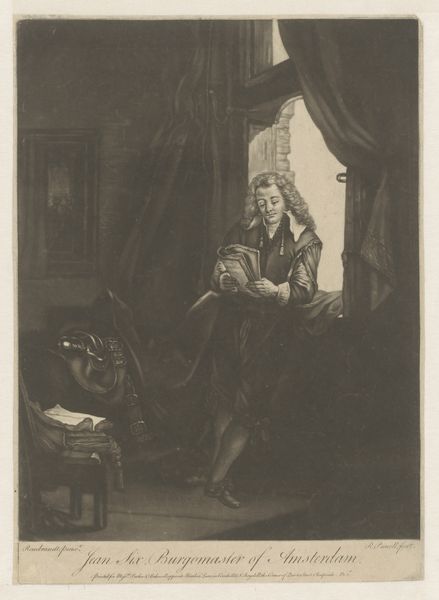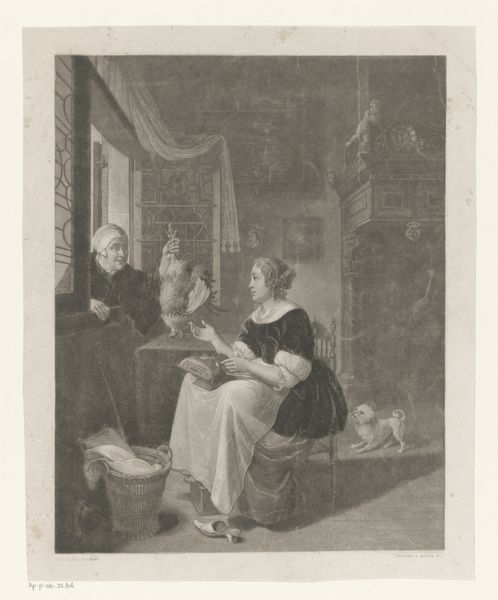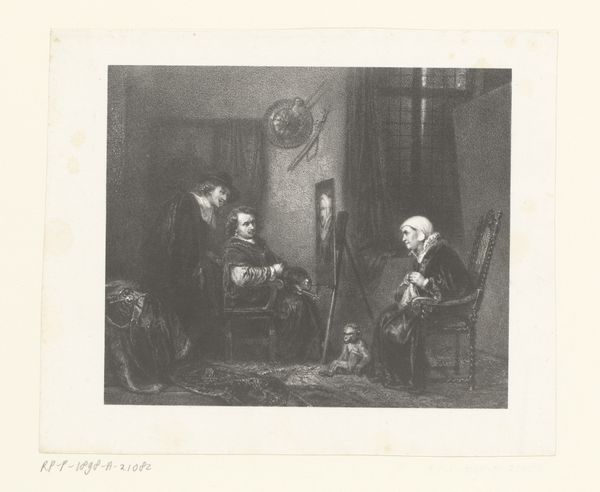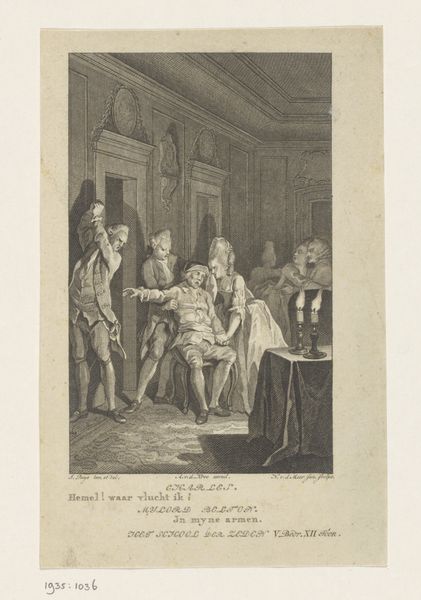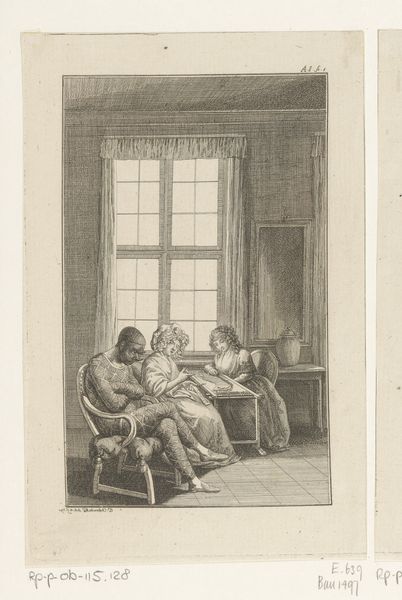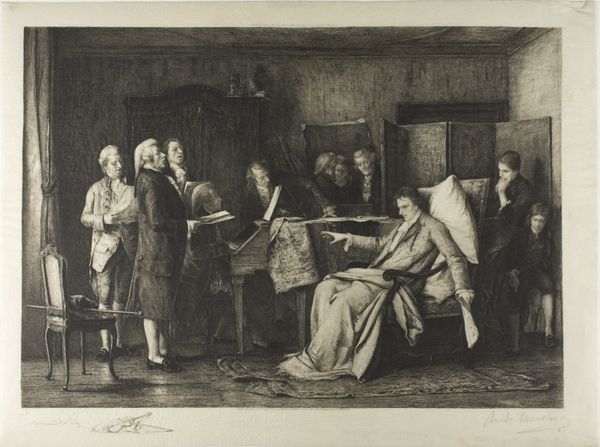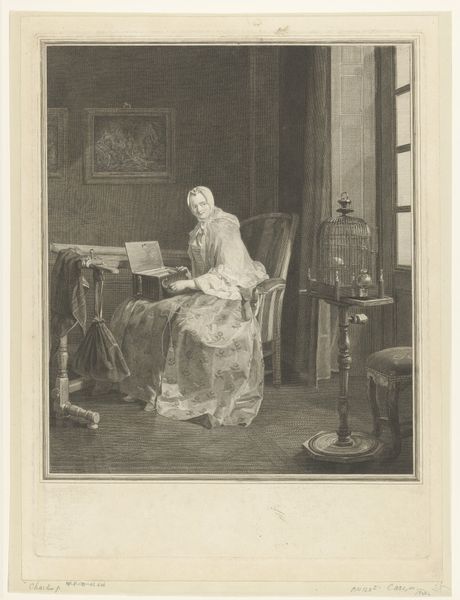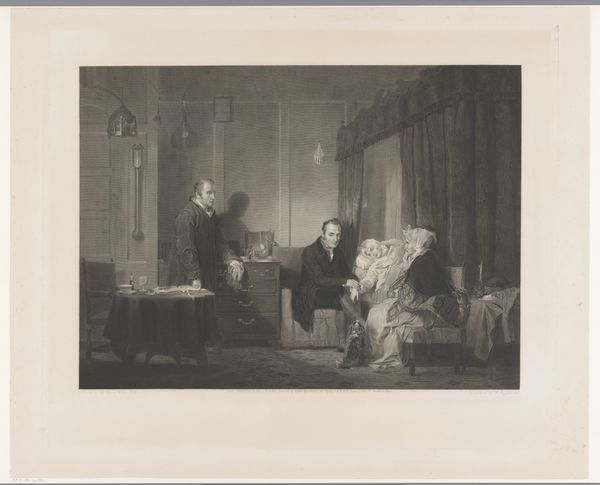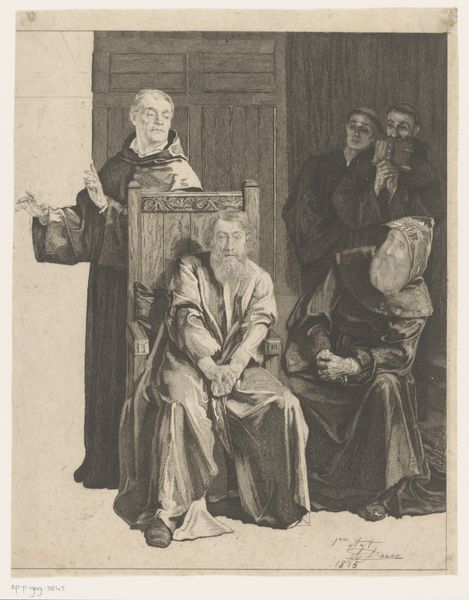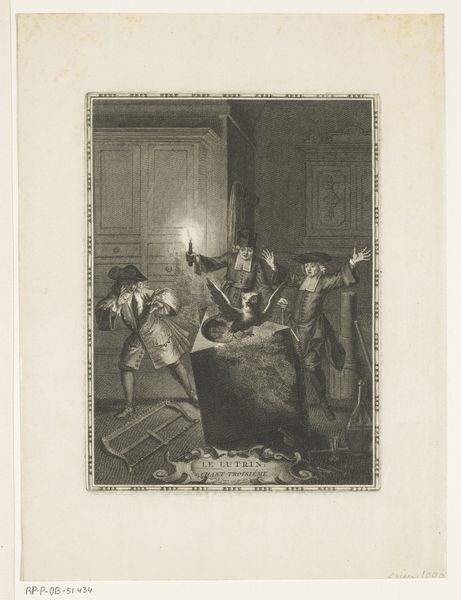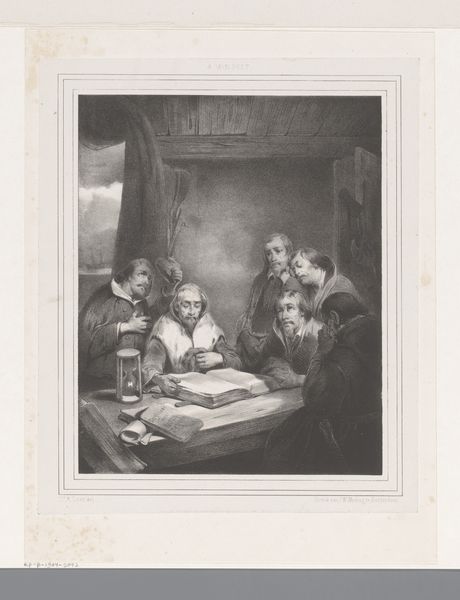
engraving
#
portrait
#
baroque
#
old engraving style
#
history-painting
#
engraving
Dimensions: height 244 mm, width 188 mm
Copyright: Rijks Museum: Open Domain
Curator: This engraving, housed here at the Rijksmuseum, presents us with Claude-Henri Watelet’s "Self-Portrait as Jan Six," dating sometime between 1735 and 1786. Watelet, as you see, casts himself in the role of the famous art collector. Editor: Oh, I love the light in this. It feels…contained. Like all the drama is happening within the four walls. And the dog! Did he really need to put the dog in? It's killing me, softly, with adorableness. Curator: Well, Watelet, known for his writings on art and gardening, would certainly have understood the function of symbolism within the composition. Jan Six, an Amsterdam mayor from the Dutch Golden Age, was himself a patron of the arts and Rembrandt’s friend, so here, Watelet, via the engraving medium, links himself to this prestigious artistic and political lineage. We see how identity and social status were constructed through, quite literally, reproducible means. Editor: True, true. All about positioning himself. It feels…aspirational. He's saying, "I'm not just some garden-variety artist, but part of *this* cultural current". And the details—the casual drape of the robe, the scroll he holds, all the little accoutrements scattered about – are these signals of intellectual refinement. Though that pooch feels quite disarming. Curator: Exactly! The materials themselves, the ink, the paper, and the very technique of engraving – a painstaking and meticulous process—reflect the artisanal labour inherent in art production during the 18th century. The availability and affordability of prints, as opposed to unique painted works, meant these images could circulate more broadly, impacting ideas of who could access art. Editor: Makes me wonder how many landed on boudoir walls! What really gets me is the way it seems Watelet plays dress up to connect the dots between artist, collector, and subject across centuries. Like an Instagram influencer of his era? Curator: Perhaps you’re not far off. Through examining his artistic methods and how this image disseminates art patronage, cultural exchange, and class, we gain a peek at how cultural relevance shifts in production and dissemination. Editor: Indeed. You see the careful design of image production; I see that little pup stealing the show and warming my cynical heart. So layered, just like history, eh?
Comments
No comments
Be the first to comment and join the conversation on the ultimate creative platform.
